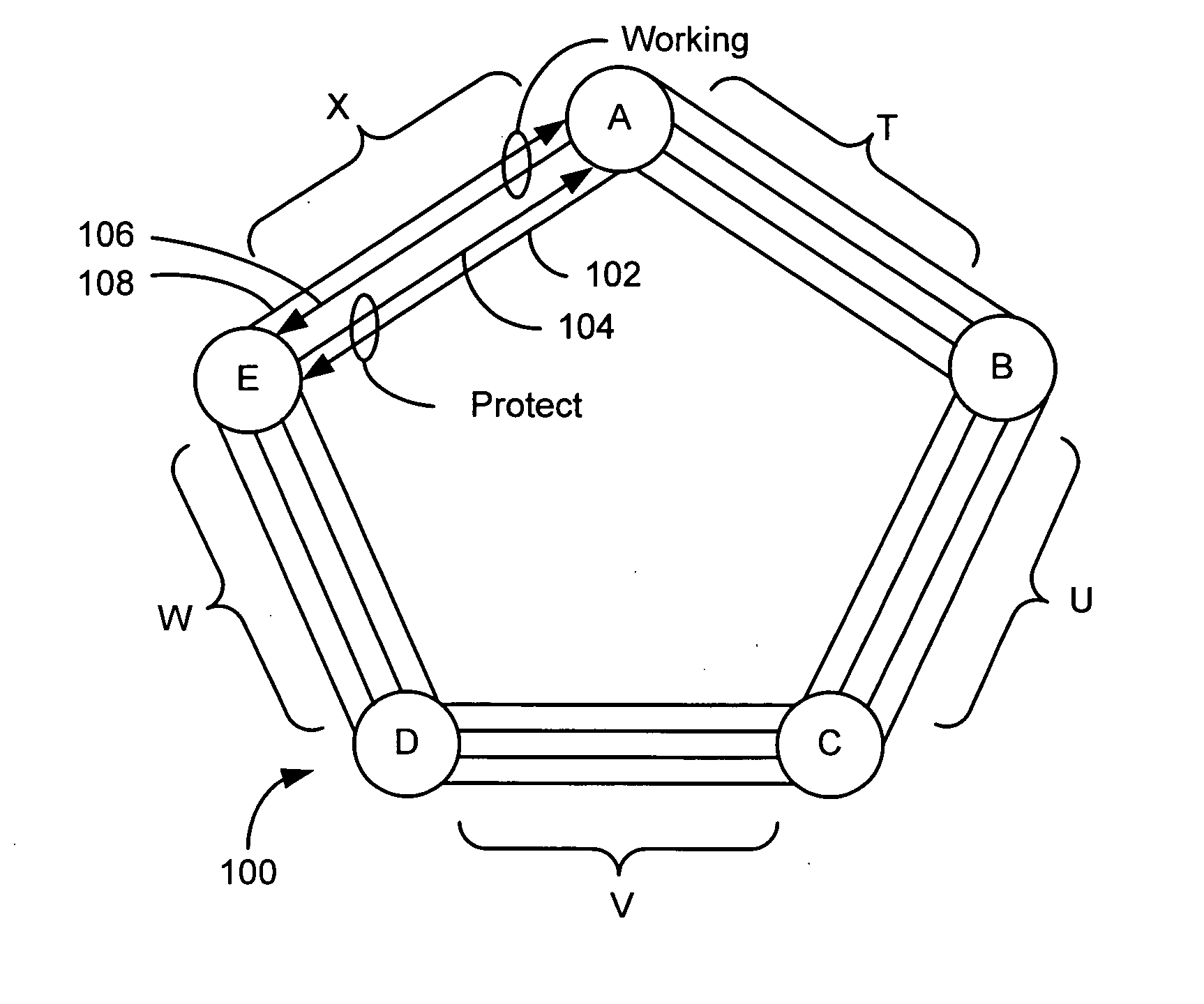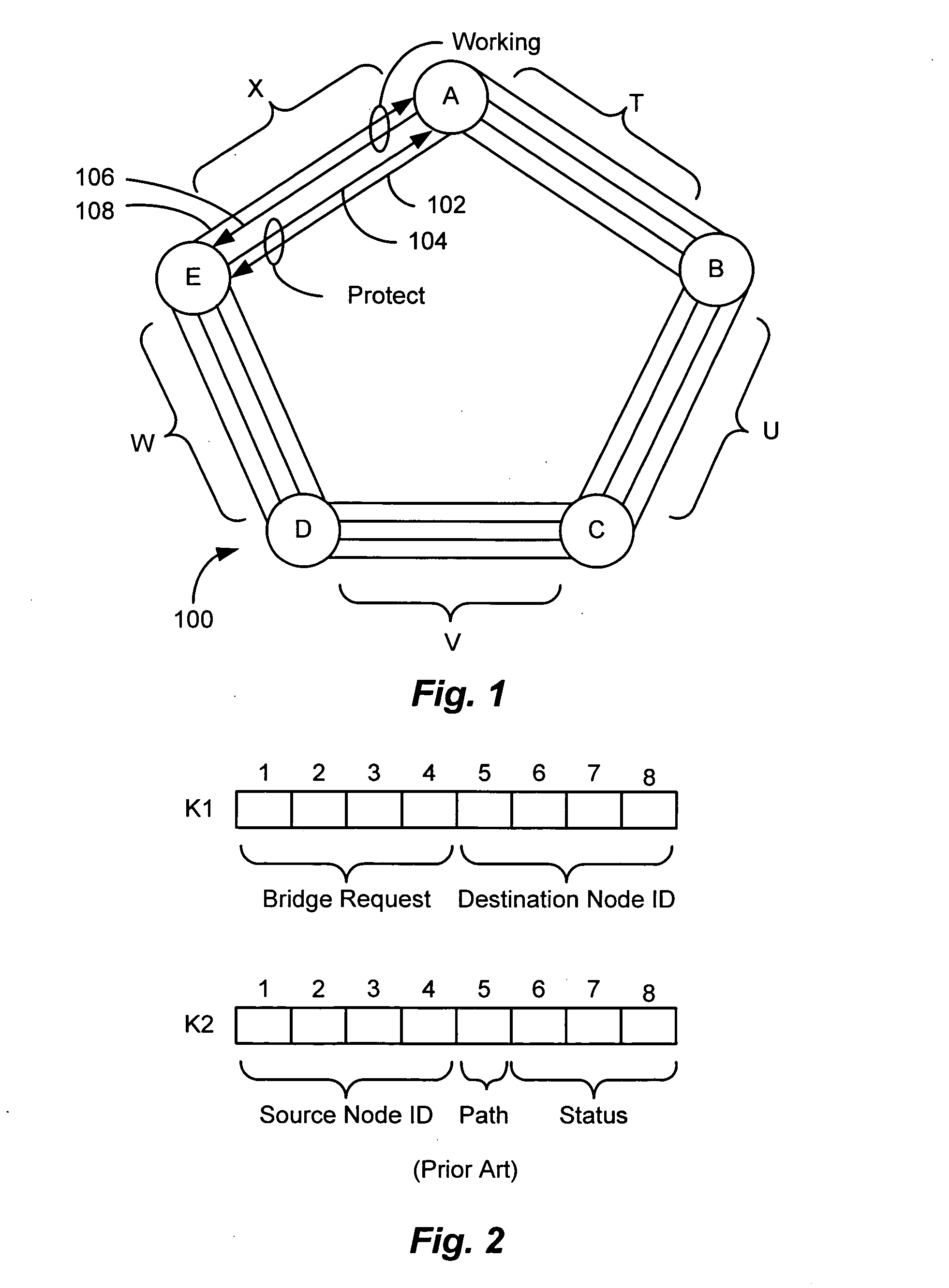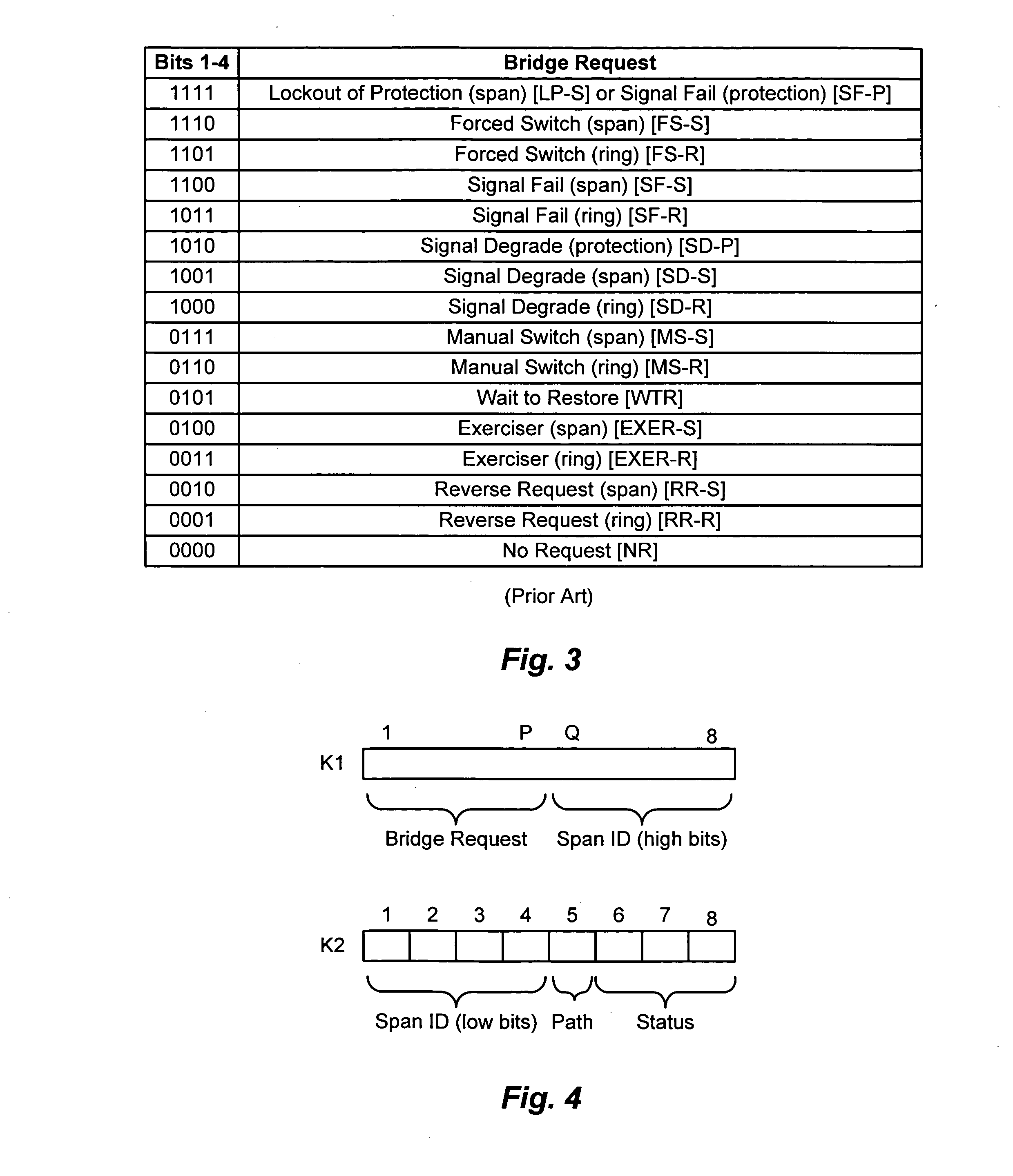Network span protection using span identifiers
a network span and identifier technology, applied in data switching networks, frequency-division multiplexes, instruments, etc., can solve the problem that the blsr protocol does not support protecting straddling spans
- Summary
- Abstract
- Description
- Claims
- Application Information
AI Technical Summary
Benefits of technology
Problems solved by technology
Method used
Image
Examples
Embodiment Construction
[0026] This contents of Provisional Patent Application No. 60 / 485,543, filed Jul. 8, 2003 and titled “Bidirectional Line Switched Ring Employing Straddling Span Protection and Protocol” are hereby incorporated by reference herein.
[0027] Telecommunications carriers and other industries often use optical fibers to carry digital data. These optical fibers are often used to interconnect nodes of a network. To improve the ability of these networks to provide data transport in case of a link or node failure, ring topologies and automatic protection switching (APS) are often employed. FIG. 1 illustrates an exemplary 4-fiber bi-directional line-switched ring (BLSR) 100, in which the present invention can be practiced. The invention can also be practiced in other network architectures, such as 2-fiber networks, mesh networks, etc., as will be evident to those of ordinary skill in the art.
[0028] The BLSR ring 100 includes nodes A, B, C, D and E. These nodes are interconnected by spans T, U,...
PUM
 Login to View More
Login to View More Abstract
Description
Claims
Application Information
 Login to View More
Login to View More - R&D
- Intellectual Property
- Life Sciences
- Materials
- Tech Scout
- Unparalleled Data Quality
- Higher Quality Content
- 60% Fewer Hallucinations
Browse by: Latest US Patents, China's latest patents, Technical Efficacy Thesaurus, Application Domain, Technology Topic, Popular Technical Reports.
© 2025 PatSnap. All rights reserved.Legal|Privacy policy|Modern Slavery Act Transparency Statement|Sitemap|About US| Contact US: help@patsnap.com



